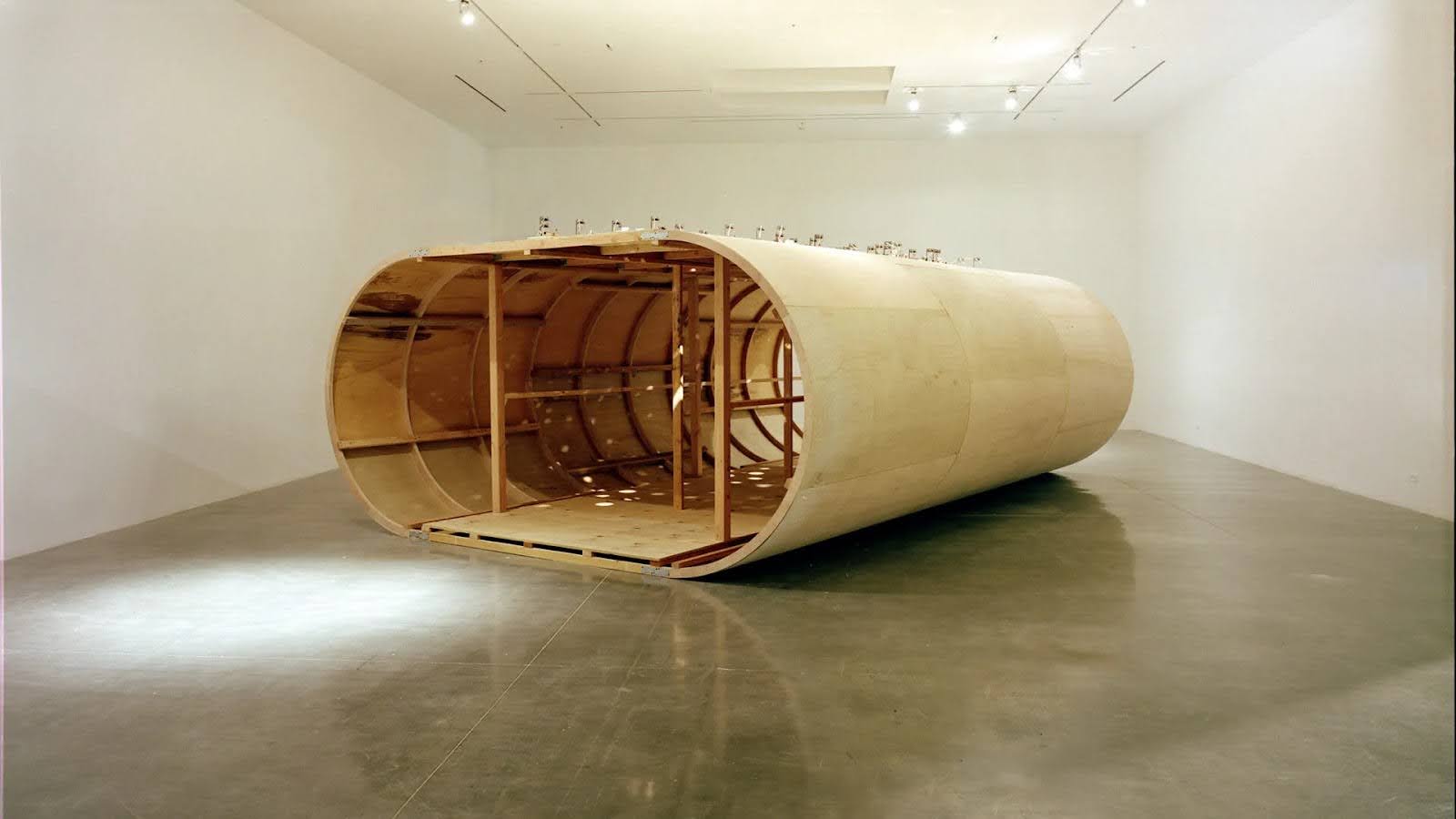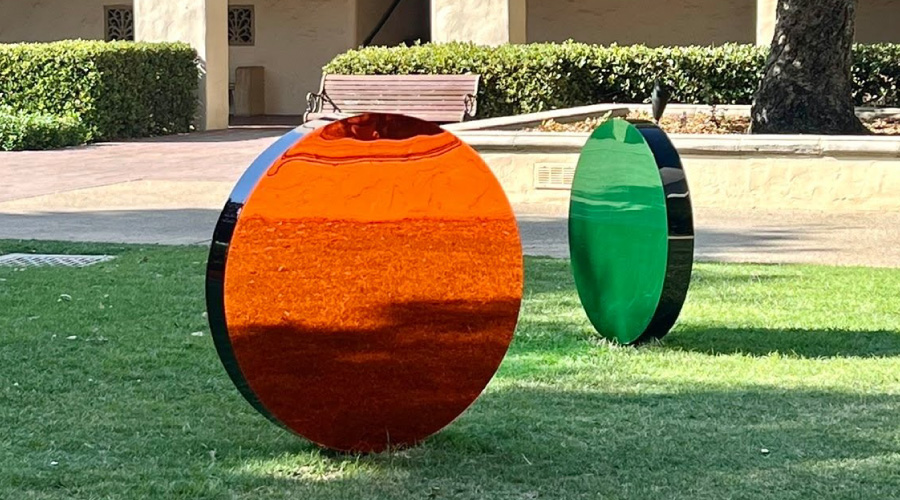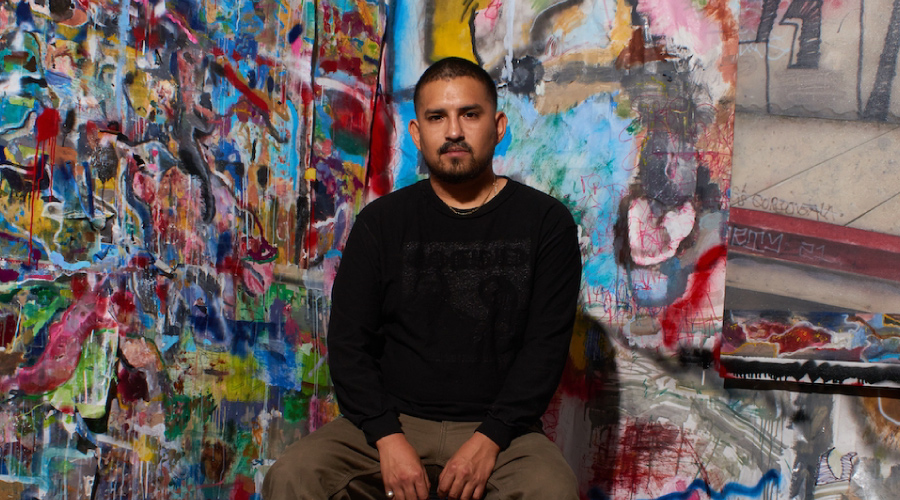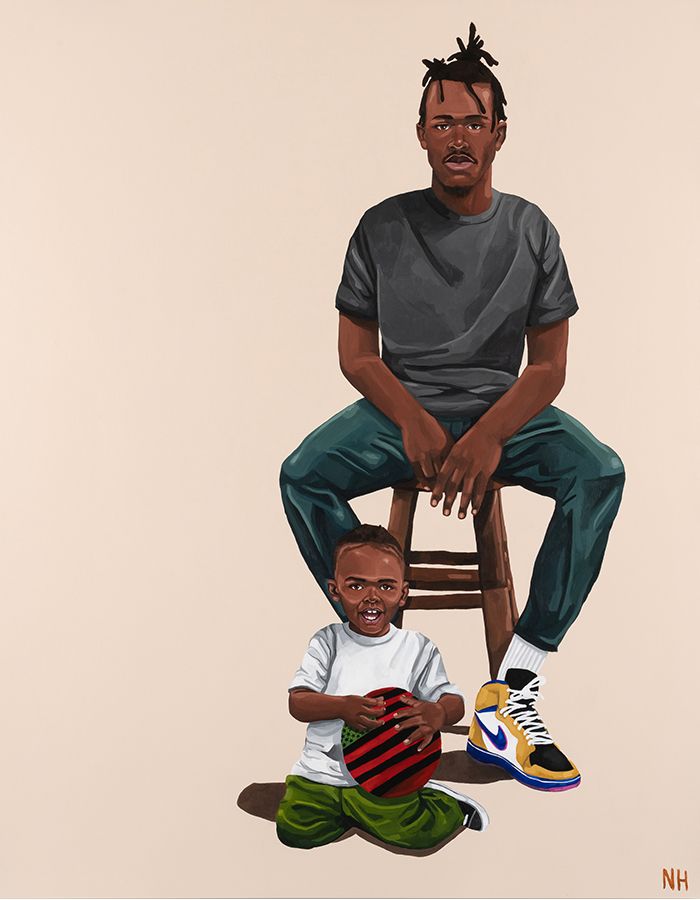Miller Robinson (’14 BFA Fine Arts) on Process and Showing in the Hammer Museum’s Biennial
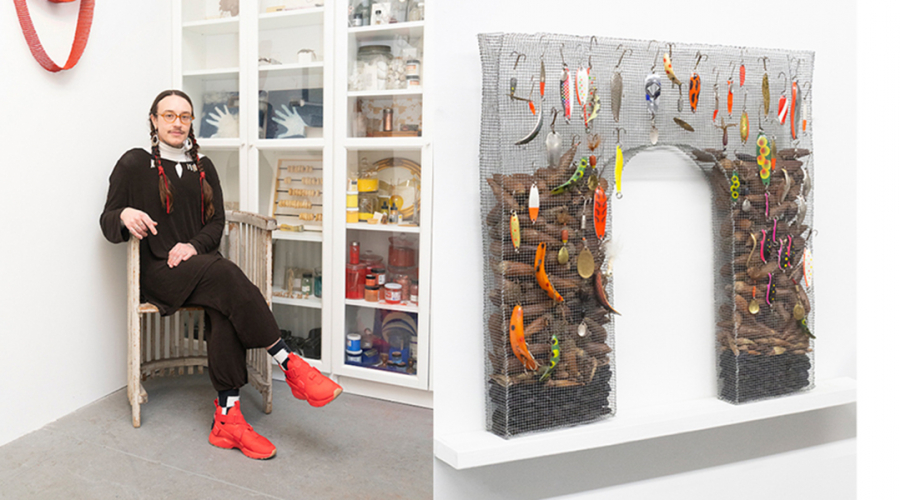
Miller Robinson’s studio resembles an exploded cabinet of curiosities, with shelves lined with bones, taxidermied animals, and jars filled with various substances standing alongside artworks incorporating wood, feathers, blood, and other natural materials. This multidisciplinarity is also on view in the Hammer Museum’s latest Made in L.A. biennial exhibition, Acts of Living, which includes an installation by Robinson of assemblage works, delicate collages, woven baskets, videos, and iridescent latex suits that resemble fish skin.
Growing up in a small town in Northern California, Robinson did not have much exposure to contemporary art, but its family modeled a creative spirit that extended beyond traditional artistic borders. (Robinson uses the nongendered pronouns it/its, in keeping with the artist’s Karuk and Yurok heritage, and reflective of its non-binary identity.) Its father was an amateur painter and an upholsterer, among other things, and Robinson grew up tinkering in his workshop, making small sculptures from found objects. “I was just around that kind of energy my whole life, and that fed into my creativity,” the artist recalls.
Despite that supportive environment, Robinson didn’t view art as a possible career path until a high school art teacher suggested art school. “I was like, ‘What is that? That’s a thing?’’’
At 17, Robinson arrived at Otis College of Art and Design, alone and away from family for the first time, an experience that was transformational, both artistically and personally.
“Otis was such an incubator for me,” Robinson told an auditorium full of Otis BFA and MFA Fine Arts students during a recent visiting artist lecture. “I came from a very sheltered background, so when I started going to art school, it really kind of gave me permission to start understanding myself.”
The artist considered itself primarily a painter when first arriving at Otis, but it was in a sculpture class learning about life-casting that it had a eureka moment. “It was just so direct, I was like, ‘I’m talking about the body, why not just use my body?’”
Sculpture provided a way to explore ambiguity and “unfixedness” as Robinson said, to pose questions that didn’t necessarily have answers. “I liked that sculpture and materiality offered this kind of illegibility, actually. That’s something that felt really safe for me because I didn’t have to name it.”
Robinson credits Otis instructors with pushing it outside its comfort zone to explore new artforms and take advantage of the interdisciplinary possibilities the school offers, both in the variety of classes available and the labs and shops that are open to all students, regardless of major. Robinson studied bookbinding and performance, both of which feature prominently in the artist’s current practice: “I just wasn’t interested in doing one thing. I get bored, and I love learning processes.”
In a class with Chris Wilder and Steve Bankhead, Robinson attempted to mount its first performance, but froze, unable to begin. Instead of viewing it as a failure, Robinson and the instructors discussed why the artist felt paralyzed in that moment. “It was interesting to have such a transformative emotional experience with wanting to do something simple, and not being able to do it,” Robinson said. “That became interesting enough to talk about, and I think that really opened me up to thinking about sculpture and performance as this very open space.”
Shortly after Robinson graduated from Otis in 2014, it staged a performance at the Heritage Square Museum, a collection of preserved Victorian era houses. Dressed all in red, Robinson led visitors on an intimate tour of the homes’ overlooked spaces. “The crux of my practice is trying to keep that intimacy and the vulnerability of just the humanness that I think sometimes is lost in formal exhibition performance spaces.”

For Made in L.A. Robinson has staged two of three planned performances, activating the space by juxtaposing individual works in new ways, napping on a faux-snakeskin latex pillow, and sweeping the floor with a broom made in collaboration with Otis instructor Allen Brewer.
“I’m really interested in this kind of slippage that happens in my performances where sometimes I am actively performing and other times I’m just inhabiting a space or interacting with viewers and informing them of the work,” Robinson told the Otis students during the lecture. “That was something that I started when I was here at Otis.”
Robinson’s exploration of material and performance coincided with a growing connection to its indigenous identity, and its identification as a transgender two-spirit individual.
“To be honest, just having the time to go super hard in my practice [at Otis] was really healing. I didn’t have an emotional outlet before that, so it really just became like a survival thing, and then it has evolved from there,” Robinson said.
Fish are recurring motifs in Robinson’s work, a reference to fishing trips spent with white relatives growing up, as well as the important role that salmon plays in Kurok culture. In a video work, Nípahootih kuuk Tanivaana, (Áama) (Returning to Myself (Salmon), Robinson wears a two-layer faux-salmon skin suit made of latex and silicone, tearing holes in it as the artist struggles to take off the top layer.
“This kind of two-sided quality really touches on my experience being two-spirit, and my experience being a colonized indigenous person that’s been displaced from their homelands, and the grief that just accumulates over time and those ongoing colonial violences that are forced onto me,” it said.
Robinson’s multivalent practice is in conversation with so many different strands of contemporary art—from performance and process-based work to environmental art—but it also offers a opportunity to explore the artist’s own identity and family history, looping back to its father’s workshop, where there was little distinction between art and craft, function and beauty.
“I do think that being an artist is all about making connections and just fostering the practice that you really enjoy having. I think that’s something I didn’t compromise on,” Robinson told Otis students. “I couldn’t compromise on the way that I made work, because it was the only way I had access to myself in a world that really doesn’t show people like me that we can be possible.”
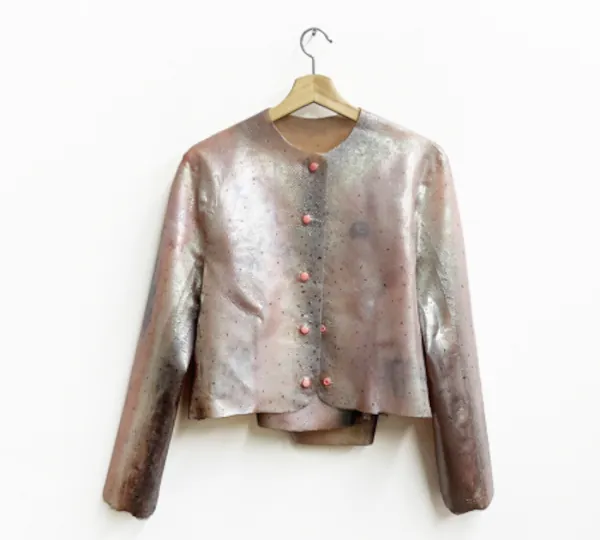
All images courtesy of Miller Robinson.
Captions, in order of appearance:
- Miller Robinson (’14 BFA Fine Arts)
- Miller Robinson, Sáak Chivchaksurúraam, Obsidian Archway
- Miller Robinson, In Search of an Exit (Exiting), The First Public Shoe Shining. May 3, 2015
- Miller Robinson, Suit No. 5 (Salmon)
